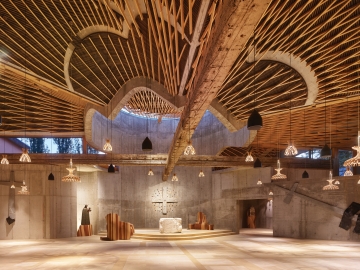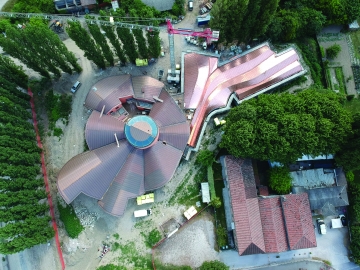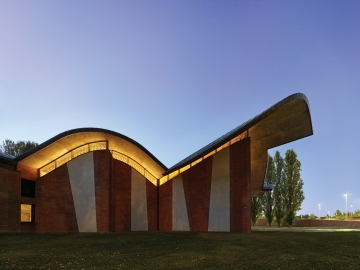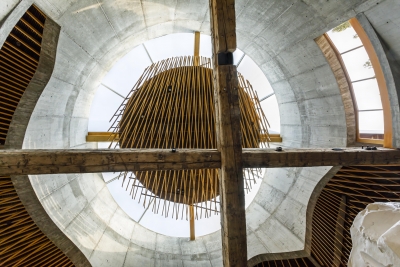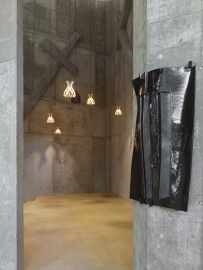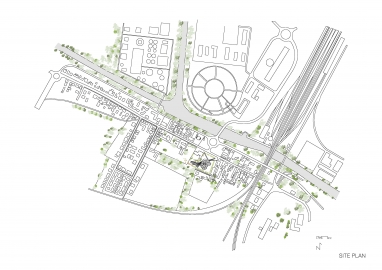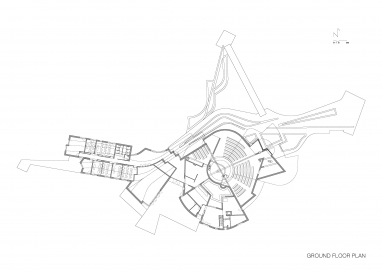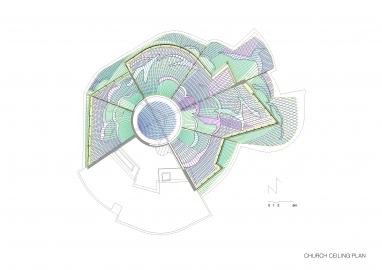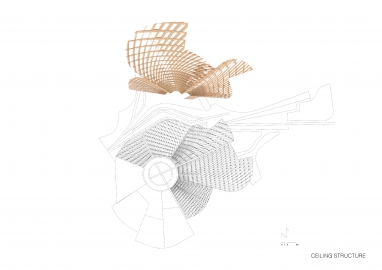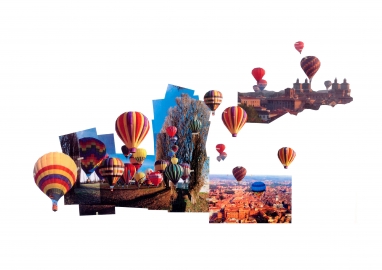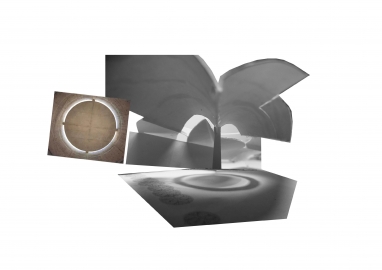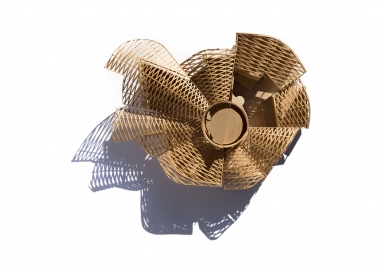San Giacomo Apostolo Church and Parish Complex
Gently touching the ground like a hot-air balloon, the parish complex and its church ‘San Giacomo Apostolo’ in Ferrara welcome the community with their light and open architecture as a focal point in the area, a new spiritual centre that promotes community identity, socialisation, and education.
The site is located on the outskirts of the Italian city of Ferrara; an historical jewel of art and architecture, a mix of ancient villages in a landscape that still shows the age-old traditions of the flat valley of river Po.
The parish complex acts as a catalyst for the surrounding area, becoming a new centre that enhances the identity of the place and promotes socialization, education, and interaction.
Surrounded by slender trees, the plot creates an intimate and familiar environment, where the church's sculptural elements take centre stage but engage harmoniously with the surrounding nature.
The church's characterised by exceptional volumes and archetypal forms that make it recognisable as a sacred space.
Next to the church, the building’s profile adopts a more intimate scale to house adjacent spaces for the sacristy, the parish house, a community meeting hall and 8 classrooms for various activities. The latter engages with the adjoining school, ensuring a strong connection between the parish complex and its surroundings.
The project for the parish complex and church of ‘San Giacomo Apostolo’ was part of a competition launched by Italian Episcopalian Conference (CEI), which commissioned three new parish churches to serve communities in the north, center and south of the country.
it was won by Benedetta Tagliabue – EMBT Architects, in collaboration artist Enzo Cucchi and liturgist Roberto Tagliaferri. This collaboration was key to formalize the dialogue between art, architecture and liturgy.
To carry out the project as envisioned, it was important to convince the client to embrace the avant-garde design and art. This was a challenge, resolved over the course of 3 years through many conversations, followed by a collaborative phase including the project manager, who oversaw the costs to work within the budgetary constraints and achieve the best result for the parish church.
This initial concept was layered with aspects relating to its material and historical relationships to the urban environment; its recognizability as a sacred building and the liturgical design in terms of distribution of the space, the design of the sacred furniture, and the artistic iconography.
The building uses an array of local, sustainable materials, connecting it with the territory's ancient rural heritage. The city's architecture, characterized by a strong tectonic quality, is echoed in the building's masonry structure, consisting of thick brick walls for their sustainability and thermal regulation properties functioning as a passive climate control system. The facades are made of visible combination of brick and plaster.
The concrete structural roof shells are covered on the inside by an acoustic lattice wood ceiling that visually dissolves the roof’s weight. Large wooden beams fly over the entire nave to form a cross, which were reclaimed from the old Town Hall. It was decided not to restore them so that they would convey all the original symbolism through this ancient and humble material. While the parish complex has a full wooden roof.
The underside of the vaults creates an extraordinary centripetal effect culminating in a suspended disc above the circular presbytery. Along the perimeter a continuous blade of light separates the roof from the walls, that allows natural ventilation to cool the space during the summer months.

